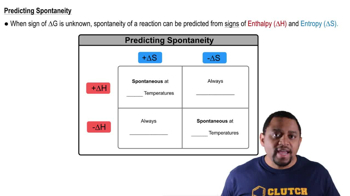Textbook Question
Identify the true statement about a spontaneous process. (a) A reaction that is nonspontaneous in the forward direction is spontaneous in the reverse direction.(b) Adding a catalyst will cause a nonspontaneous reaction to become spontaneous.(c) In a spontaneous process, the entropy of the system always decreases.(d) An endothermic reaction is always spontaneous.




